 Ernest Krenkel was an explorer, radio operator, doctor of geographical sciences (1938), and Hero of the Soviet Union (1938). He held several Ameteur Radio callsigns: EU2EQ, U3AA, UA3AA, RAEM and RAEM/MM. Born in Balystok, Poland 24 december 1903, Ernest Kernkel passes away in Moscow, on 8 december 1971.
Ernest Krenkel was an explorer, radio operator, doctor of geographical sciences (1938), and Hero of the Soviet Union (1938). He held several Ameteur Radio callsigns: EU2EQ, U3AA, UA3AA, RAEM and RAEM/MM. Born in Balystok, Poland 24 december 1903, Ernest Kernkel passes away in Moscow, on 8 december 1971.
Krenkel was in Antarctica, in 1968, the honored scientist shook off the antiquity for the last time and led another Polar expedition to Antarctica.
Further, on February 6, 1969, on the Antarctic island of King George, where the Bellingshausen station is located, a meeting was held with the President of Chile, Eduard Frey, who visited the real one standing on this site. During the sail, Krenkel went on the air on shortwave amateur radio bands under the call sign RAEM/MM.
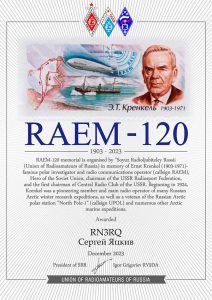 RAEM-120 Award
RAEM-120 Award
This year Russian Union of Radio Amateurs celebrates a significant date – 120 years since the birth of the outstanding polar explorer Ernst Teodorovich Krenkel (RAEM) the first Polar radio operator (RAEM). Date of this challenge is from December 15 to 25, 2023.Here below, the list of call signs that will work at the E.T. Krenkel Memorial.
R120RAEM – Novosibirsk region
R120A – Moscow city
R120D – Moscow region
R120I – Tomsk region
R120K – Arkhangelsk region
R120M – Stavropol region
R120N – Nizhny Novgorod region
R120R – Tambov region
R120S – Sverdlovsk region
R120T – Tyumen region
R120W – Irkutsk region
R120X – Samara region
Check: R120I – Callsign Lookup by QRZ Ham Radio for more info
In the book “The life of an engineer” written by, Zubkov E.V. , and on “RAEM/MM is my callsign”, WAP picked up some paragraphs to get more info about Ernest Krenkel, Arctic & Antarctic veteran explorer:
See: raem009 (antentop.org)
On November 15, 1968, R/V Professor Zubov, set off on its first Antarctic voyage, carrying 250 participants of the 14th SAE (Soviet Antarctic Expedition). The scientific-research vessel Professor Zubov was bound for the shores of Antarctica to relieve its staff of winterers found there, and also for oceanographic research. Ernest Krenkel was one of the expedition members and the ship’s crew head. Krenkel was wintering at Molodezhnaya Station where the second batch of polar explorers from the fourteenth SAE was located, heading to Mirny, Vostok and Bellingshausen.
During the voyage on the R/V Zubov, Krenkel, kept a diary. He was a gifted narrator, graphic, with apt language in which were no trite sentences or clumsy wording. Ernst Teodorovich appears before us as a very ordinary man who with boyish ardour is concerned with his daily watch on the air for radio amateurs.
In 1933, Krenkel sailed as a radio operator on the icebreaker Sibiryakov. For the first time in the history of navigation, the ship then passed the Northern Sea Route (from Murmansk to the Bering Strait) in one summer season.
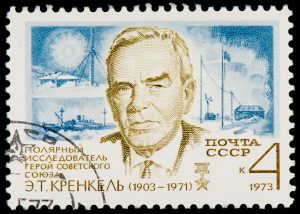 In 1934 RAEM was the callsign of the I/B Cheluskin smashed by ice in the North polar sea. I was the chief operatore –wrote krenkel- Since then RAEM is my personal amateur callsign.
In 1934 RAEM was the callsign of the I/B Cheluskin smashed by ice in the North polar sea. I was the chief operatore –wrote krenkel- Since then RAEM is my personal amateur callsign.
In 1968, Krenkel was 65 years old. On the flight he was on, he was perceived as an old man. Gray-haired, tall, gaunt, bony. People treated him with respect and not because he was the flight commander, but they sympathized with him in a purely human way. His manner was conducive to that: accessibility, restrained benevolence. A person who has spent a long time in the closed, close collectives of polar stations cannot be arrogant and inaccessible. Here aside the Soviet postage stamp dedicated to Ernst Krenkel, a Soviet Arctic explorer, doctor of geographical sciences (1938), and Hero of the Soviet Union (1938).
WAP hopes the great family of the WW Radio Amateurs will join this important HF event!
TNX DX Trophy (Oleg UA6GG)
 On 23 January 1954, Argentine Navy personnel did inaugurate the Cabo Primavera Refuge (now Capitán Cobbett Naval Refuge) on a rocky promontory on Cape Primavera. Over many years this building was used by Argentine exploration expeditions to the area to collect Meteorology and Biology data.
On 23 January 1954, Argentine Navy personnel did inaugurate the Cabo Primavera Refuge (now Capitán Cobbett Naval Refuge) on a rocky promontory on Cape Primavera. Over many years this building was used by Argentine exploration expeditions to the area to collect Meteorology and Biology data. A bit of history
A bit of history
 Eric sent us a preview of the new QSL of TM1ANT expressly designed for the 2024’s AAW .
Eric sent us a preview of the new QSL of TM1ANT expressly designed for the 2024’s AAW .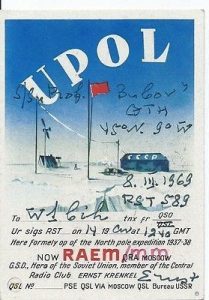 In the summer of 1924 Ernst Krenkel went to Leningrad with what little money he had saved, hoping to find employment as the radio operator on any ship undertaking a long voyage. At that time, only specially designated Soviet vessels went on long voyages, and in Leningrad there were already qualified naval radio operators without work. Just when Krenkel had given up all hope of finding work he was told that the hydrographic management bureau was in urgent need of a radio operator prepared to go on any expedition, to any island in the Arctic ocean. There was little interest because the pay was poor and it was necessary to be away for the whole year, living in ‘hellish’ conditions.
In the summer of 1924 Ernst Krenkel went to Leningrad with what little money he had saved, hoping to find employment as the radio operator on any ship undertaking a long voyage. At that time, only specially designated Soviet vessels went on long voyages, and in Leningrad there were already qualified naval radio operators without work. Just when Krenkel had given up all hope of finding work he was told that the hydrographic management bureau was in urgent need of a radio operator prepared to go on any expedition, to any island in the Arctic ocean. There was little interest because the pay was poor and it was necessary to be away for the whole year, living in ‘hellish’ conditions. wearing his new naval uniform he set off by train to Arkhangelsk (Archangel). On arrival he was assigned to the “ Yugorski Shar “ which was preparing to take the relief crew to the first Soviet polar observatory “Matochkin Shar”, constructed the year before on the northern coast of the Matochkin Shar strait of the Novaya Zemlya archipelago.
wearing his new naval uniform he set off by train to Arkhangelsk (Archangel). On arrival he was assigned to the “ Yugorski Shar “ which was preparing to take the relief crew to the first Soviet polar observatory “Matochkin Shar”, constructed the year before on the northern coast of the Matochkin Shar strait of the Novaya Zemlya archipelago. Ham radio was born in the USSR and Ernst Krenkel was delighted. Soon he was on-air using homebrew equipment, with the callsign EU2EQ (later U3AA).
Ham radio was born in the USSR and Ernst Krenkel was delighted. Soon he was on-air using homebrew equipment, with the callsign EU2EQ (later U3AA).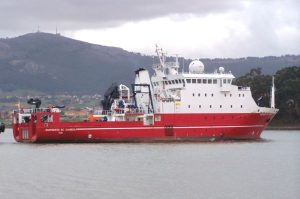 The Oceanographic Vessel (B/O) Sarmiento de Gamboa is a multidisciplinary research vessel with a global non-polar scope. Its instrumentation and laboratories allow it to carry out studies of global ocean circulation, marine biodiversity, fishery resources and climate change; It is also used to perform work in geology, marine geophysics, hydrography, physical and chemical oceanography, marine biology, resource estimation (fisheries), ocean monitoring with remotely operated vehicles (ROVs, AUVs, submarines, etc.), and deployment of underwater observatories (OBSEA, GEOSTAR)
The Oceanographic Vessel (B/O) Sarmiento de Gamboa is a multidisciplinary research vessel with a global non-polar scope. Its instrumentation and laboratories allow it to carry out studies of global ocean circulation, marine biodiversity, fishery resources and climate change; It is also used to perform work in geology, marine geophysics, hydrography, physical and chemical oceanography, marine biology, resource estimation (fisheries), ocean monitoring with remotely operated vehicles (ROVs, AUVs, submarines, etc.), and deployment of underwater observatories (OBSEA, GEOSTAR) It also has the most advanced technologies in terms of navigation systems (for example, dynamic positioning) and is the first Spanish oceanographic vessel that can work with high-depth ROVs (Remote Operated Vehicles) and AUVs (Autonomous Underwater Vehicle).
It also has the most advanced technologies in terms of navigation systems (for example, dynamic positioning) and is the first Spanish oceanographic vessel that can work with high-depth ROVs (Remote Operated Vehicles) and AUVs (Autonomous Underwater Vehicle). Kottas camp (74°12′ South, 9°44′ West) is a German Field Camp at Dronning Maud Land, Antarctica has been add to
Kottas camp (74°12′ South, 9°44′ West) is a German Field Camp at Dronning Maud Land, Antarctica has been add to 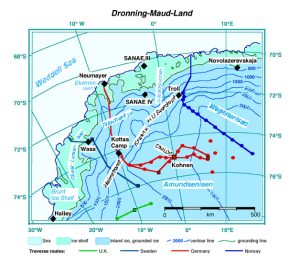 The 460km long stake line comprises approximately 950 stakes . It starts 10 km South of Neumayes at 70°41.83’ South, 8°26’24” West and ends after the crossing of Kottasberge at 74° 30’00” South, 9°13,09’ West.
The 460km long stake line comprises approximately 950 stakes . It starts 10 km South of Neumayes at 70°41.83’ South, 8°26’24” West and ends after the crossing of Kottasberge at 74° 30’00” South, 9°13,09’ West. 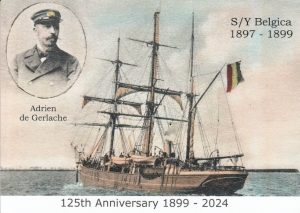 The Belgian Antarctic Expedition of 1897–1899 was the first expedition to winter in the Antarctic region. Led by Adrien de Gerlache de Gomery, it was the first Belgian Antarctic expedition and is considered the first expedition of the Heroic Age of Antarctic Exploration. Among its members were Frederick Cook and Roald Amundsen, explorers who would later attempt the respective conquests of the North and South Poles.
The Belgian Antarctic Expedition of 1897–1899 was the first expedition to winter in the Antarctic region. Led by Adrien de Gerlache de Gomery, it was the first Belgian Antarctic expedition and is considered the first expedition of the Heroic Age of Antarctic Exploration. Among its members were Frederick Cook and Roald Amundsen, explorers who would later attempt the respective conquests of the North and South Poles. S/Y Belgica did remain trapped in the ice for a long Antarctic winter.
S/Y Belgica did remain trapped in the ice for a long Antarctic winter. Edgeworth David Fied Camp (aka Edgeworth David Base) was established as a summer camp in 1986. Located at 66°14’59” South, 100°36’12” East , in the Northen Bunger Hills, Edgeworth David summer Base lies about 7 kilometres (4.3 mi) from WNW of Polish Antoni Dobrowolski Station (
Edgeworth David Fied Camp (aka Edgeworth David Base) was established as a summer camp in 1986. Located at 66°14’59” South, 100°36’12” East , in the Northen Bunger Hills, Edgeworth David summer Base lies about 7 kilometres (4.3 mi) from WNW of Polish Antoni Dobrowolski Station ( Edgeworth David Field Camp has been
Edgeworth David Field Camp has been The twenty third edition (release 1.43) of
The twenty third edition (release 1.43) of 
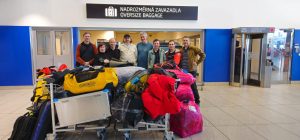 Few days ago, the Czech members of the Antarctic Expedition to Nelson Island were in Punta Arenas, Chile, waiting for a Brazilian ship to take them to their destination. That morning the host of
Few days ago, the Czech members of the Antarctic Expedition to Nelson Island were in Punta Arenas, Chile, waiting for a Brazilian ship to take them to their destination. That morning the host of 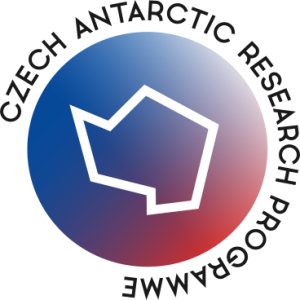
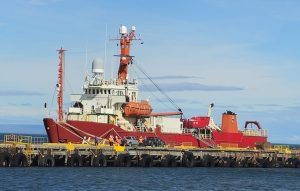 Antarctic Program, which will set sail this afternoon Jan 2nd 2024, heading Antarctica.
Antarctic Program, which will set sail this afternoon Jan 2nd 2024, heading Antarctica.

 Hi folks,
Hi folks,
 Our good friend Volker, DL8JDX is currently embarked on M/S Hamburg heading Antarctica. They will be in the Antarctic until Jan. 29, 2024… unfortunately, no radio from him!
Our good friend Volker, DL8JDX is currently embarked on M/S Hamburg heading Antarctica. They will be in the Antarctic until Jan. 29, 2024… unfortunately, no radio from him!
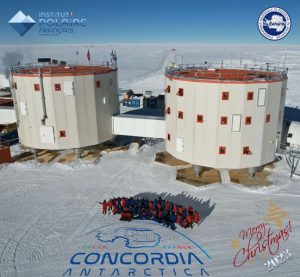

 On the cusp of the COP28 climate talks, U.N. Secretary-General Antonio Guterres visited Antarctica and stopped at Chilean Base P.te Eduardo Frei (
On the cusp of the COP28 climate talks, U.N. Secretary-General Antonio Guterres visited Antarctica and stopped at Chilean Base P.te Eduardo Frei (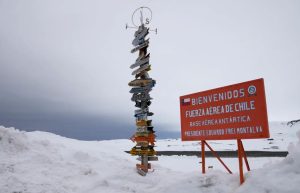 A study published in Nature Climate Change last month said warming has increased to the point that the ice sheet will now experience “unavoidable” melting regardless of how much the world reduces emissions of planet-warming gases like carbon dioxide.
A study published in Nature Climate Change last month said warming has increased to the point that the ice sheet will now experience “unavoidable” melting regardless of how much the world reduces emissions of planet-warming gases like carbon dioxide. Ernest Krenkel was an explorer, radio operator, doctor of geographical sciences (1938), and Hero of the Soviet Union (1938). He held several Ameteur Radio callsigns: EU2EQ, U3AA, UA3AA, RAEM and RAEM/MM. Born in Balystok, Poland 24 december 1903, Ernest Kernkel passes away in Moscow, on 8 december 1971.
Ernest Krenkel was an explorer, radio operator, doctor of geographical sciences (1938), and Hero of the Soviet Union (1938). He held several Ameteur Radio callsigns: EU2EQ, U3AA, UA3AA, RAEM and RAEM/MM. Born in Balystok, Poland 24 december 1903, Ernest Kernkel passes away in Moscow, on 8 december 1971. RAEM-120 Award
RAEM-120 Award
 In 1934 RAEM was the callsign of the I/B Cheluskin smashed by ice in the North polar sea. I was the chief operatore –wrote krenkel- Since then RAEM is my personal amateur callsign.
In 1934 RAEM was the callsign of the I/B Cheluskin smashed by ice in the North polar sea. I was the chief operatore –wrote krenkel- Since then RAEM is my personal amateur callsign. A celebration held at Argentinean Base San Martín (
A celebration held at Argentinean Base San Martín (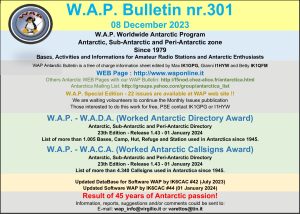 WAP Antarctic Bulletin nr. 301 relaesed today December 8th 2023 is available on line with last info and reported activity from Antarctica.
WAP Antarctic Bulletin nr. 301 relaesed today December 8th 2023 is available on line with last info and reported activity from Antarctica.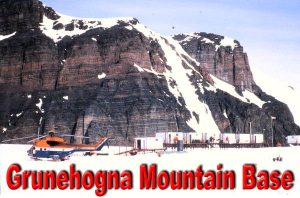 Grunehogna Mountain Base and Sarie Marais Field Base , at 72°Ø2’ØØ”South Ø2°48’ØØ”West, 1047 mts of altitude, seems to be two different Antarctic Bases but really, it’s the same site which holds two names. (pic on the Left, shows Grunehogna, while pic on the Right sows Sarie Marais).
Grunehogna Mountain Base and Sarie Marais Field Base , at 72°Ø2’ØØ”South Ø2°48’ØØ”West, 1047 mts of altitude, seems to be two different Antarctic Bases but really, it’s the same site which holds two names. (pic on the Left, shows Grunehogna, while pic on the Right sows Sarie Marais).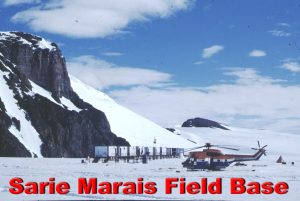 Located 250km inland from the main SANAE IV Base (
Located 250km inland from the main SANAE IV Base ( A QSL provided recently by Bob, K4MZU clearly show and documents a QSO dated 14 January 1992 with ZS5GMT Graham Tilbury who was operating
A QSL provided recently by Bob, K4MZU clearly show and documents a QSO dated 14 January 1992 with ZS5GMT Graham Tilbury who was operating  Humans didn’t discover Antarctica until 1820.
Humans didn’t discover Antarctica until 1820.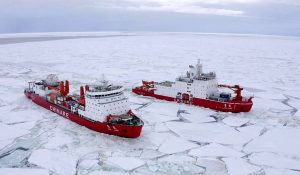 Two Chinese icebreaker research vessels and a cargo ship set sail last November 1st for the Antarctic with more than 460 personnel on board to help complete construction of China’s fifth Research Station on the world’s southernmost continent, which could be finished next year.
Two Chinese icebreaker research vessels and a cargo ship set sail last November 1st for the Antarctic with more than 460 personnel on board to help complete construction of China’s fifth Research Station on the world’s southernmost continent, which could be finished next year.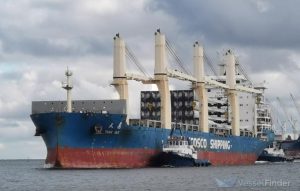 The cargo ship “Tianhui”, or “Divine Blessings”(
The cargo ship “Tianhui”, or “Divine Blessings”( 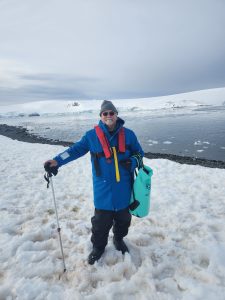 Don Conlee WX5DC is a professor at A&M Atmospheric Sciences in Texas.
Don Conlee WX5DC is a professor at A&M Atmospheric Sciences in Texas.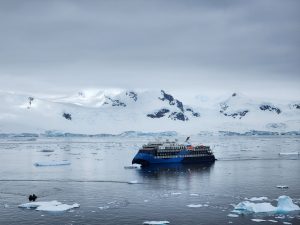 Don, along with class members, is actually on board of M/V Ocean Victory sailing to the South Shetland Islands/Antarctica .
Don, along with class members, is actually on board of M/V Ocean Victory sailing to the South Shetland Islands/Antarctica .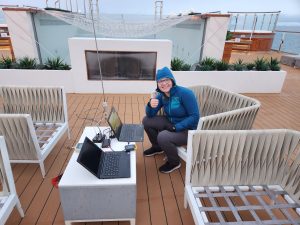 operate briefly before dinner and hopefully for the sweet spot of 0-3Z. Winds have died down and snow stopped, so fingers crossed-.
operate briefly before dinner and hopefully for the sweet spot of 0-3Z. Winds have died down and snow stopped, so fingers crossed-.  February 2024 marks the 21st edition of the Antarctic Activity Week (
February 2024 marks the 21st edition of the Antarctic Activity Week (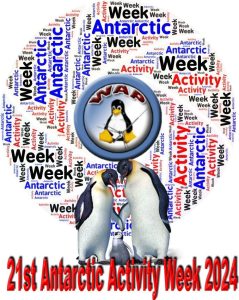 As known, the main purpose of the A.A.W. is to increase worldwide interest around Antarctic Continent and its related matters, with the aim of staying close to the researchers and personnel who are spending their time away from home and families, studying the Antarctic life and its secrets. Additional purpose is to share what Nations and Organizations are doing to protect this still non contaminated corner of the world, to share a message of peace WW.
As known, the main purpose of the A.A.W. is to increase worldwide interest around Antarctic Continent and its related matters, with the aim of staying close to the researchers and personnel who are spending their time away from home and families, studying the Antarctic life and its secrets. Additional purpose is to share what Nations and Organizations are doing to protect this still non contaminated corner of the world, to share a message of peace WW. The Captain Pieter J. Lenie Base (WAP USA-12) is an Antarctic summer base operated by the United States located at Copacabana Beach, Admiralty Bay (King George Island). About two kilometers northwest of this base, is the Polish Research Station Arctowski (WAP POL-Ø1).
The Captain Pieter J. Lenie Base (WAP USA-12) is an Antarctic summer base operated by the United States located at Copacabana Beach, Admiralty Bay (King George Island). About two kilometers northwest of this base, is the Polish Research Station Arctowski (WAP POL-Ø1). The new building of the Henryk Arctowski Polish Antarctic Station, will become operational in 2023. Two years earlier, as part of the tests, the structure will be assembled in Poland
The new building of the Henryk Arctowski Polish Antarctic Station, will become operational in 2023. Two years earlier, as part of the tests, the structure will be assembled in Poland
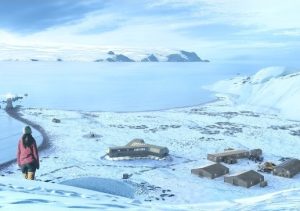 Ministry of Science announced that it would provide a designated purpose to modernize the station`s infrastructure and build a new main building. Its layout will resemble a three-pointed star. In the heart of the station there will be a common space where residents will spend time.
Ministry of Science announced that it would provide a designated purpose to modernize the station`s infrastructure and build a new main building. Its layout will resemble a three-pointed star. In the heart of the station there will be a common space where residents will spend time. The Islas Malvinas Refuge, originally Antonio Moro, is an Antarctic Refuge located at 200 m a.s.l. at 63°25′ South, 56°58′ West, at Nunatak Nobby, Tabarin Peninsula, Bahía Esperanza .
The Islas Malvinas Refuge, originally Antonio Moro, is an Antarctic Refuge located at 200 m a.s.l. at 63°25′ South, 56°58′ West, at Nunatak Nobby, Tabarin Peninsula, Bahía Esperanza .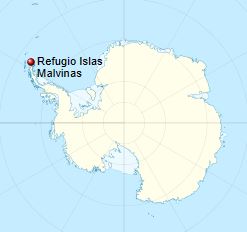 Refugio Islas Malvinas (WAP ARG-New) is one of the 18 shelters that are under the responsibility of the Esperanza base, which is responsible for maintenance and care. It is administered by the Argentine Army.
Refugio Islas Malvinas (WAP ARG-New) is one of the 18 shelters that are under the responsibility of the Esperanza base, which is responsible for maintenance and care. It is administered by the Argentine Army. While waiting two years and three months to be rescued when their sloop Favorite was shipwrecked at Kerguelen in 1825, the British sealer and cartographer John Nunn and his crew spent some miserable months trying to survive on Saddle Island (now called Ile de l’Ouest) at 49°17’59” South, 70°31’56” East, buffeted by the merciless westerly winds.
While waiting two years and three months to be rescued when their sloop Favorite was shipwrecked at Kerguelen in 1825, the British sealer and cartographer John Nunn and his crew spent some miserable months trying to survive on Saddle Island (now called Ile de l’Ouest) at 49°17’59” South, 70°31’56” East, buffeted by the merciless westerly winds.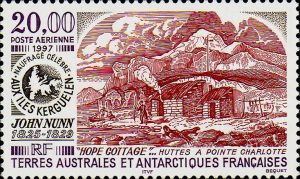 The group was finally spotted in 1827 by Captain Alexander Distant on the schooner Sprightly, belonging to the celebrated shipowner Enderby of London. Nunn and his crewmates joined the Sprightly in hunting whales and elephant seals until 25 March 1829, at which point they were finally returned to Harwich, England four years after the shipwreck.
The group was finally spotted in 1827 by Captain Alexander Distant on the schooner Sprightly, belonging to the celebrated shipowner Enderby of London. Nunn and his crewmates joined the Sprightly in hunting whales and elephant seals until 25 March 1829, at which point they were finally returned to Harwich, England four years after the shipwreck.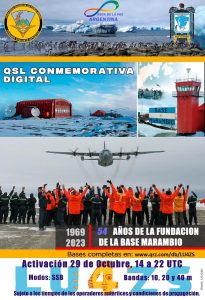 October 29, marks the fifty-fourth anniversary (1969-2023) of the birthday of Marambio Joint Antarctic Base (
October 29, marks the fifty-fourth anniversary (1969-2023) of the birthday of Marambio Joint Antarctic Base (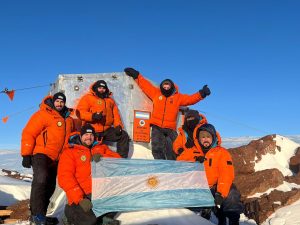 Last mid september 2023, a patrol from the Joint Antarctic Base Belgrano II (
Last mid september 2023, a patrol from the Joint Antarctic Base Belgrano II (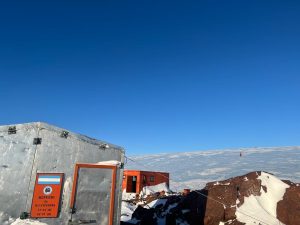
 Antarctica, this remote and mysterious Continent, arouses the curiosity of many people. If you’ve ever considered working there, you’ve probably wondered what the pay is for working in Antarctica. What follows, highlight the different job opportunities on this Continent. To give a more accurate idea of salaries in Antarctica, here are some examples of compensation for different types of jobs:
Antarctica, this remote and mysterious Continent, arouses the curiosity of many people. If you’ve ever considered working there, you’ve probably wondered what the pay is for working in Antarctica. What follows, highlight the different job opportunities on this Continent. To give a more accurate idea of salaries in Antarctica, here are some examples of compensation for different types of jobs: To find job openings in Antarctica, it is recommended to check the websites of the organizations that run research bases on the continent. These organizations include:
To find job openings in Antarctica, it is recommended to check the websites of the organizations that run research bases on the continent. These organizations include: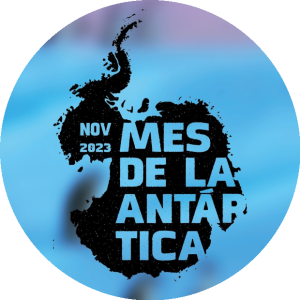 The Chilean Antarctic Institute (
The Chilean Antarctic Institute ( Amateur Radio activities,will be carried out with the purpose of contribute to spreading the presence and operation of the only Antarcticbroadcasting radio station.
Amateur Radio activities,will be carried out with the purpose of contribute to spreading the presence and operation of the only Antarcticbroadcasting radio station. LRA 36, Radio National “Arcángel Sas Gabriel”, is located at 63º 23′ South and 56º 59′ West, in the “Sargento Cabral” blockhouse at Esperanza Base, to the northern end of the Antarctic Peninsula. In front of the bay is the Antarctic Strait, and the Base is at the foot of Mount Flora, an important paleontological site. It is the only shortwave station that Argentina has in Antarctica, and transmits 15,476 KHz. Since this year, transmissions cover 12 months.
LRA 36, Radio National “Arcángel Sas Gabriel”, is located at 63º 23′ South and 56º 59′ West, in the “Sargento Cabral” blockhouse at Esperanza Base, to the northern end of the Antarctic Peninsula. In front of the bay is the Antarctic Strait, and the Base is at the foot of Mount Flora, an important paleontological site. It is the only shortwave station that Argentina has in Antarctica, and transmits 15,476 KHz. Since this year, transmissions cover 12 months.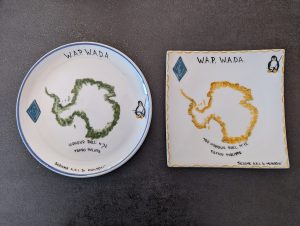 Congrats to Philippe Laurent F6FHO for the Top HR
Congrats to Philippe Laurent F6FHO for the Top HR  Another sad news among the Antarctic chasers and Ham radio community. Prof. Carlo Raso, IK5IWU passed away last week at the age of 82.
Another sad news among the Antarctic chasers and Ham radio community. Prof. Carlo Raso, IK5IWU passed away last week at the age of 82. Keen DXer, Carlo has been the soul and the organizator of several Antarctic Activity Weeks mostly done at the Italian Air Force Bases. We must remember: II2AMI (
Keen DXer, Carlo has been the soul and the organizator of several Antarctic Activity Weeks mostly done at the Italian Air Force Bases. We must remember: II2AMI (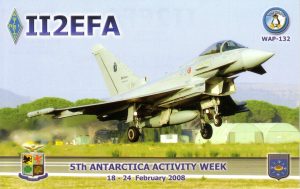

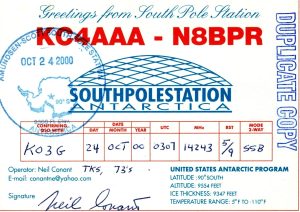 He was chief communications operator and supervisor at KC4AAA – South Pole Station (
He was chief communications operator and supervisor at KC4AAA – South Pole Station ( Duncan Bluff and Communication Heights in the southern part of the Darwin Mountains in Antarctica, was named after Neil, a genuine veteran of the ice ».
Duncan Bluff and Communication Heights in the southern part of the Darwin Mountains in Antarctica, was named after Neil, a genuine veteran of the ice ».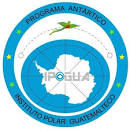 Get to know the first Guatemalan Polar Institute in the city of Huehuetenango that has a museum called
Get to know the first Guatemalan Polar Institute in the city of Huehuetenango that has a museum called 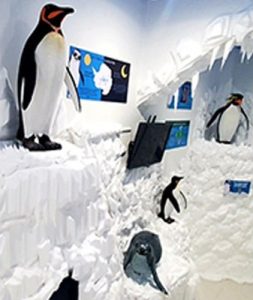
 More than 100 Russian Radio Amateurs are joining a very important event in the city of Orel.
More than 100 Russian Radio Amateurs are joining a very important event in the city of Orel.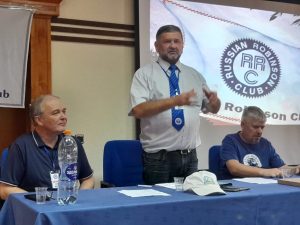 UA9OBA Yuri Zaruba (
UA9OBA Yuri Zaruba (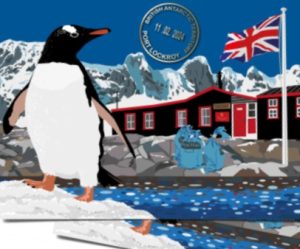 Would anyone like to send a postcard from the penguin post office in Antarctica?
Would anyone like to send a postcard from the penguin post office in Antarctica?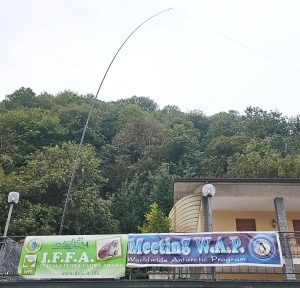 The 20th W.A.P. Meeting “Worldwide Antarctic Program”, together with the 22nd Diploma Castelli d’Italia e della Provincia di Cuneo” and the 14th I.F.F.A. Meeting “Italian Flora Fauna Award” took place on Sunday 17th September in Northen Italy on the hills of the City of Mondovì.
The 20th W.A.P. Meeting “Worldwide Antarctic Program”, together with the 22nd Diploma Castelli d’Italia e della Provincia di Cuneo” and the 14th I.F.F.A. Meeting “Italian Flora Fauna Award” took place on Sunday 17th September in Northen Italy on the hills of the City of Mondovì.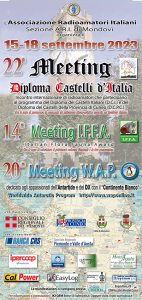
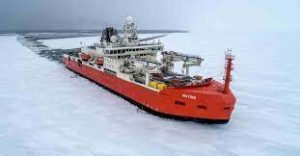 The Australian expeditioner requiring urgent medical care has been airlifted in a “complex operation” from the Casey Research Station (
The Australian expeditioner requiring urgent medical care has been airlifted in a “complex operation” from the Casey Research Station (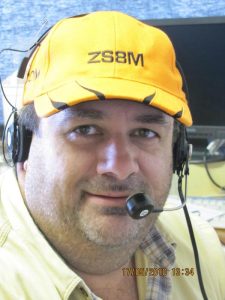 Another sad news!
Another sad news!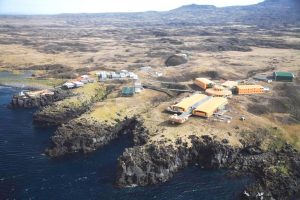
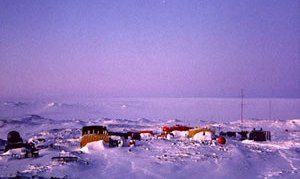 Australia has launched an urgent operation to rescue a researcher with a “developing medical condition” from the remote Casey Research Station (
Australia has launched an urgent operation to rescue a researcher with a “developing medical condition” from the remote Casey Research Station (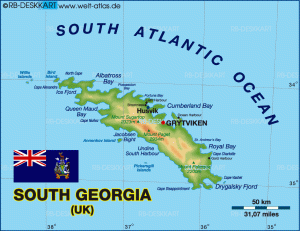 Located in the remote South Atlantic Ocean, South Georgia Island has a reputation for the greatest density of wildlife on earth. It’s home to king penguins, fur seals, and 50 percent of the world’s southern elephant seals.
Located in the remote South Atlantic Ocean, South Georgia Island has a reputation for the greatest density of wildlife on earth. It’s home to king penguins, fur seals, and 50 percent of the world’s southern elephant seals.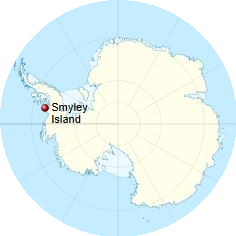 Smyley Island is an Antarctic island lying off the Antarctic Peninsula at coordinates (72°55′South, 78°0′West). The island is 61 km (38 mi) long and from 13 to 34 km (8 to 21 mi) wide and lies about 20 kilometers (12.4 miles) north of Case Island and the island connects to the Stange Ice Shelf. Smyley island is one of the 27 islands of Palmer Land,
Smyley Island is an Antarctic island lying off the Antarctic Peninsula at coordinates (72°55′South, 78°0′West). The island is 61 km (38 mi) long and from 13 to 34 km (8 to 21 mi) wide and lies about 20 kilometers (12.4 miles) north of Case Island and the island connects to the Stange Ice Shelf. Smyley island is one of the 27 islands of Palmer Land, 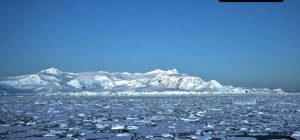 A catastrophic die-off of emperor penguin chicks has been observed in the Antarctic, with up to 10,000 young birds estimated to have been killed. The event, in late 2022, occurred in the west of the continent in an area fronting on to the Bellingshausen Sea.
A catastrophic die-off of emperor penguin chicks has been observed in the Antarctic, with up to 10,000 young birds estimated to have been killed. The event, in late 2022, occurred in the west of the continent in an area fronting on to the Bellingshausen Sea.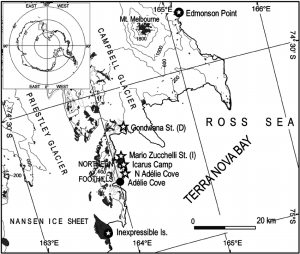 o the Italian MZS Station (
o the Italian MZS Station (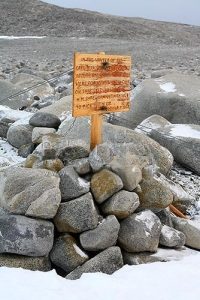 They dug an ice cave and built a rock shelter, though suffered greatly from frostbite, hunger and dysentery. They gave the name “Inexpressible Island” in recognition of how awful the place and time they spent there was.
They dug an ice cave and built a rock shelter, though suffered greatly from frostbite, hunger and dysentery. They gave the name “Inexpressible Island” in recognition of how awful the place and time they spent there was.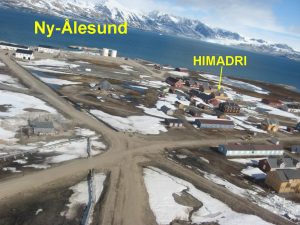 The cost of the vessel is now estimated to be ₹ 2,600 crore, he noted. “I am hopeful that in this financial year, we should be ready to propose this estimate and move in the Cabinet. In the next five years, we should be ready with the ship,” Mr Rijiju stated.
The cost of the vessel is now estimated to be ₹ 2,600 crore, he noted. “I am hopeful that in this financial year, we should be ready to propose this estimate and move in the Cabinet. In the next five years, we should be ready with the ship,” Mr Rijiju stated.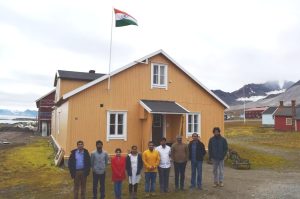
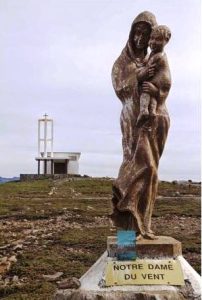 Also known as the Desolation Islands, the Kerguelen archipelago consists of 300 islands, islets, and reefs which lie between 48° to 50° South and 68° to 70° East, covering an area of 7,215 km² (2,786 mi²) .
Also known as the Desolation Islands, the Kerguelen archipelago consists of 300 islands, islets, and reefs which lie between 48° to 50° South and 68° to 70° East, covering an area of 7,215 km² (2,786 mi²) .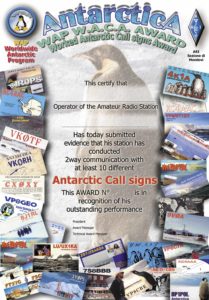 WAP-WACA
WAP-WACA
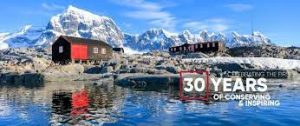 On 28 July,
On 28 July,  “While we’re using the moment to celebrate our successes (and grab a truly unique slice of cake), it is also a time to look forward. Antarctica is complex, fragile and rapidly changing – and so too is its heritage. As such, UKAHT must also keep evolving and rethinking our role to best champion our cherished sites and
“While we’re using the moment to celebrate our successes (and grab a truly unique slice of cake), it is also a time to look forward. Antarctica is complex, fragile and rapidly changing – and so too is its heritage. As such, UKAHT must also keep evolving and rethinking our role to best champion our cherished sites and Our attentive readers and WAP follower know that DL8JDX did join last year with an Expedition Cruise to Antarctica where he retourned after a long absence at the beginning of 2023.
Our attentive readers and WAP follower know that DL8JDX did join last year with an Expedition Cruise to Antarctica where he retourned after a long absence at the beginning of 2023. Interesting is the chart provided by
Interesting is the chart provided by  Radio Technician), passed away at the age of 96.
Radio Technician), passed away at the age of 96.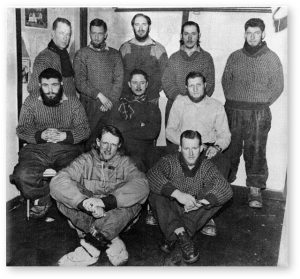 The picture on the left, taken by Andre le roux van der Merwe a medical doctor of the first South African Expedition (SANAE) to Antarctica shows the first South Africa’s Team at SANAE 1, 1960
The picture on the left, taken by Andre le roux van der Merwe a medical doctor of the first South African Expedition (SANAE) to Antarctica shows the first South Africa’s Team at SANAE 1, 1960